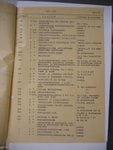drgondog
Major
Drgondog
Finnish oppinion was for Bf 109 G-2 and G-6.
Typical cruising flight at 2500m at 0.9-1.0 ata, 420-440km/h IAS, 470-490 km/h TAS, consumption 250l/h, max flight time c. 1½h. Max distance c. 750km without any reserves.
Juha
Thx Juha - it reinforces how amazing the 51/Merlin combination was, in comparison to the 109 which isn't bad at all... but best cruise for ferry purposes was around 16K feet at 2000 rpm and 27" hg ------> 45-50gph (175-190 l/h) depending on weight, but at that setting it was slower than 440km/hr - so there is a trade off in comparing the two cruising speed for max range - if I understood your figures correctly.
Based on the above info, matching the 109G approximate max flight time to maximum distance suggests the happy combination of highest cruise speed to maximum distance - which is unusual.
In most airframes the longest flight times are at a lower speed and fuel consumtion, while the greater distance is achieved with higer speeds but lower maximum endurance times


